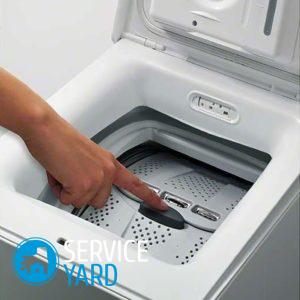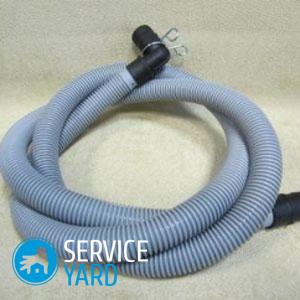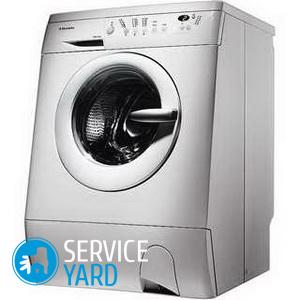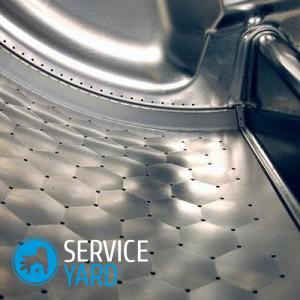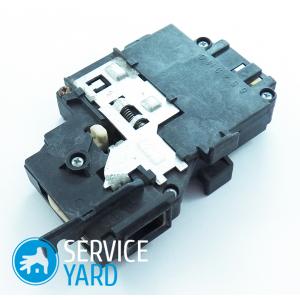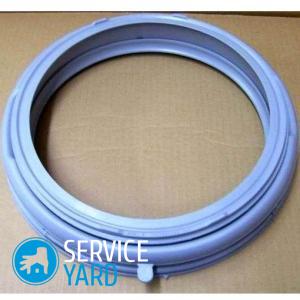Repair of washing machines

Not a single household appliance, even the most modern and high-tech, is immune from malfunctions. Including washing machines. But today, manufacturers are trying to create such designs that even a person without experience will be able to fix simple failures without resorting to the services of craftsmen. Let's talk about the repair of washing machines.
to contents ↑Training
Self-repair of washing machines at home is a simple matter, if you prepare well, but it all depends on the breakdown. To begin with, a number of general recommendations should be followed.
Recommendations:
- To make the diagnosis faster, you can see if the device gives an error code and check it against the list of codes for your model.
- If you identify the cause - prepare all the materials and tools in advance. So you save a lot of time.
- Be sure to check the instructions for use of the device before starting the diagnosis.
- Follow safety precautions - only repair the washing machine when it is disconnected from the electricity and water.
Important! Just in case, find the phone of a good repairman in advance - he will help you if you can’t do it.
We will deal further with the tools necessary for self-repair.
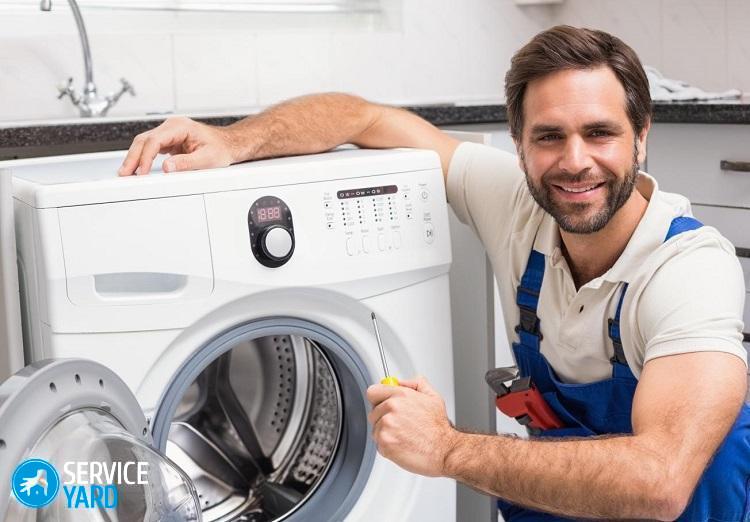
Instruments
Of course, what tools and materials you will need in the process - will depend on the specific failure. But there is a universal kit that any home master will need:
- Screwdriver set: Phillips and flat;
- pliers for clamps;
- set of wrenches;
- pliers;
- nippers;
- sealant.
Important! Keep your tools handy so you don’t have to spend time on the device you need at the moment, running around the apartment.
For a correct diagnosis, you should understand how the washing machine works and how it works.
to contents ↑Device design and operation
The operation of the washing machine is provided by many interconnected parts and systems.
Important! Not only complexity, but also in principle - the possibility of repairing washing machines depends directly on which particular unit is out of order.
Key Details:
- ventilation for the drum;
- water collection and distribution system;
- inlet valves;
- compartment for detergents;
- suspension;
- counterweight;
- siphon;
- emergency opening system;
- drain system;
- shock absorbers;
- water level sensors;
- the electronic board;
- drum;
- TEN;
- engine;
- external device control system;
- connecting hoses and pipes;
- drive belt;
- pump;
- door and adjacent to it seals, sensors and latches.
Now let's see how the device works.
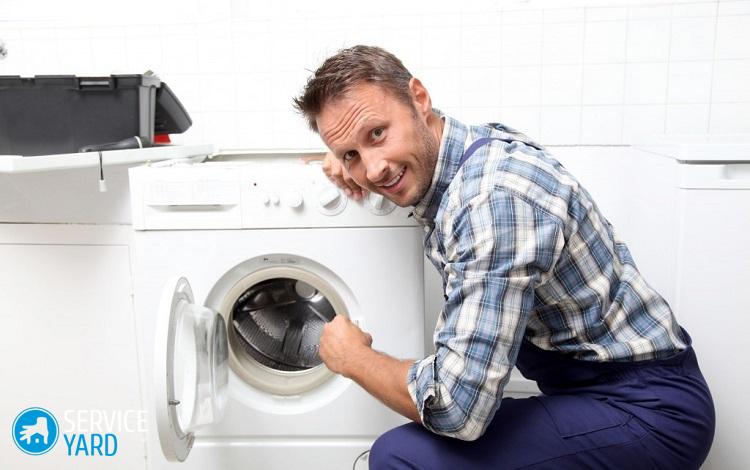
Device operation
The principle of operation of all washing machines is the same. Differences may be in washing modes and additional functions. Let's talk about the general principle of the device:
- In order for water to enter the tank, the inlet valve opens.
- After filling the tank with water to the required level, the sensor activates and the supply valve closes.
- Next, the system responsible for heating the water begins to work. Its main element - TEN, heats water to a certain temperature. If there is no temperature sensor in the device, the heating goes on by timer.
- Together with the heater, the device’s motor is started and turns on the rotation of the drum, but not at full power. The drum spins at short intervals.
- After - the pump pumps out dirty water, the valve re-opens and pumps clean water.
- Then the valve closes, the motor is connected again and the device operates in rinse mode, at low speeds. After - water is pumped out.
- The next step is spin. The drum starts spinning at maximum speed.
Important! Please note that the pump is constantly on during operation.
We got acquainted with the device and the basic principle of the device. We turn to possible breakdowns and the question of how to repair washing machines at home.
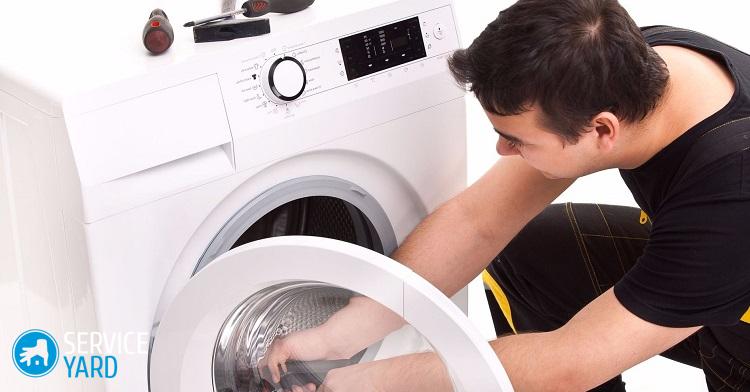
Frequent breakdowns
The most common problems are not so many, we will deal with the main ones, their causes and talk about fixing them.
The device does not respond to activation
With this malfunction, the following causes are possible:
- Incorrectly selected washing mode - restarting the device will help correct the situation.
- The machine door does not fit snugly against the body. Check the door, the seals between it and the tank, and the door latches.
- The machine may not be connected to the network. You should see if the cord, socket, plug of the device is working, and also if the plugs are broken. Or maybe the device is simply disconnected from the outlet, then repair of the washing machine is not required.
- Also, the device may not turn on if there is no water entering it. For diagnosis, the first thing to check is whether the supply valves are open.
- If the wiring is damaged, the device will also refuse to work. For diagnostics, it is necessary to disconnect the device from the power supply, dismantle the removable panels of the case, check whether the contacts have oxidized, and if necessary, clean them. If everything is normal with the contacts - they ring the cord for breaks.
Important! Another common cause of this type of malfunction is a timer breakdown. For diagnostics, you need to switch programs until the drum starts. If this does not happen, the timer is checked, and in case of a malfunction, it is changed.
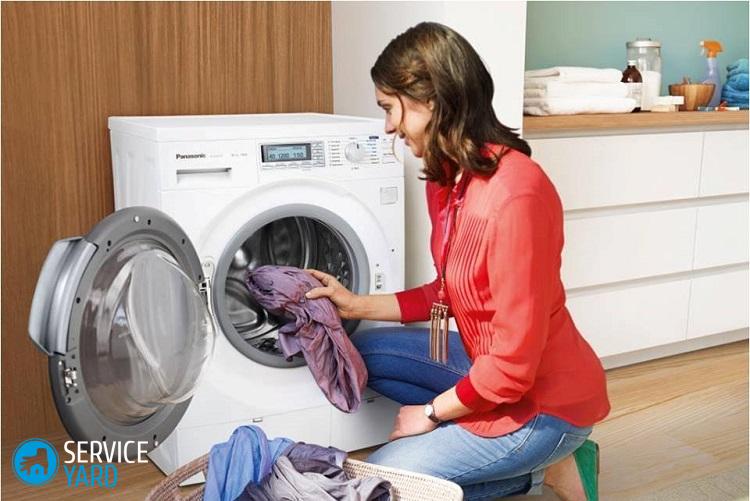
The machine does not pump water
This option also suggests various reasons:
- Disabled water intake. Check the taps and valves.
- The inlet hose is deformed, check it, flush if necessary, correct.
- Clogged filter element. In case of this problem, close the valve that supplies water to the device, carefully disconnect the hose, and drain the water from it. After - the filter is removed and washed under running water. Next, the system is assembled in the reverse order. This will be the entire repair of the washing machine.
- Damage to the valve. If the filter lets in dirt, they can easily get on the valve and it will break. If this happens, the part will have to be replaced.
Another reason is a malfunction in the water level sensor. If the water in the tank exceeds the required level, then the air is compressed in the control system and the protective mechanism that shuts off the water supply is activated. Damage is possible with clogging of this system.
To return the device to working condition, you will have to perform a number of actions:
- Checking the tube on the switch: if it hardens at the end - it is removed, cut and installed back.
Important! You can blow into the tube to check. If you hear how the switch switches, it means that the work has been done correctly.
- After - loosen the hose clamp that connects the tank and the pressure chamber.
- The camera is cleaned and inspected for damage.
- Then check the switch. It is called with a multimeter and is replaced if damaged.
Another problem with your washing machine is water problems.

Slow set of water
If the machine draws water for too long, the following malfunctions are possible:
- Clogged or kinked hose through which water enters the appliance. It is easy to dismantle a hose, to wash and establish into place exactly, without excesses. Maybe you just need to clean the drain hose.
- Filter clogging - in this case, they do the same as with the hose: the filter is removed, washed and installed back.
- Low water pressure.In this case, it is worth checking whether the valve responsible for the flow of water is fully open.
Important! If the valve is all right, then the problem is the pressure of the central water supply. Repair of the washing machine is not required - this question should be addressed to the ZhEK specialists.
Lack of water heating
This type of malfunction can also cause various causes.
Broken water level sensor
In this case, the sensor does not recognize whether the device is full, and accordingly, it does not switch the device to heating mode. To establish whether the sensor is broken - it is called, it is replaced if necessary.
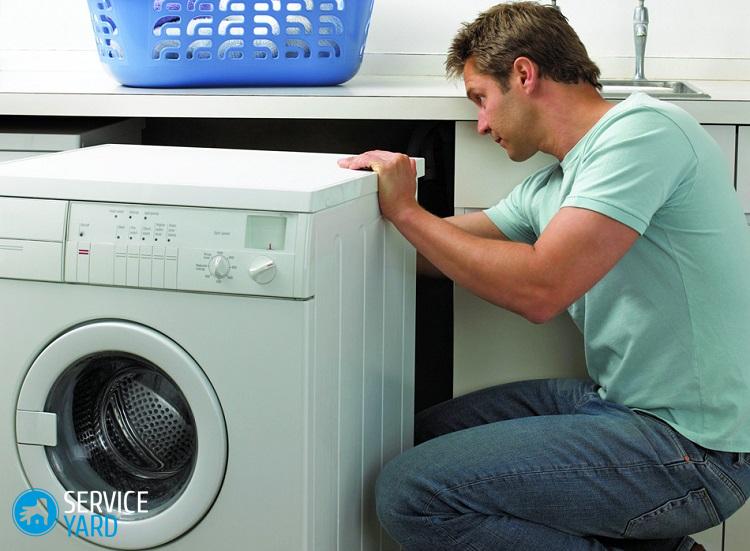
Scale on the heater
Hard water and the lack of good filters over time make themselves felt - lime deposits appear on the heater. But this problem is easily solved. The device is disassembled, the heater is removed and it is cleaned of plaque.
Important! If the element is completely destroyed, then repairing the washing machine involves replacing the heater.
Oxidation of contacts of the heating element or their weakening
Contacts can be tightened, cleaned and ringing for cliffs. If they are found - the heater is replaced.
Temperature sensor malfunction
For diagnosis, you need to ring the part. In the event of a malfunction, the sensor may turn off the heating earlier than necessary.
Another option for failure is when the device starts up, but does not finish the mode.
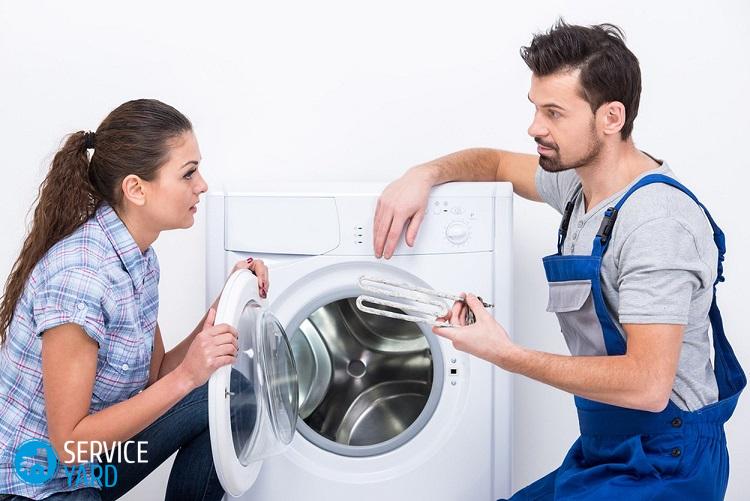
Device stop
There are many reasons for this malfunction - from simple to complex:
- The mode switch is paused.
- Missing electricity. Perhaps the plugs were knocked out or the voltage disappeared from the outlet.
- Clogged filter or hose.
- Blockage or breakdown of the pump. At the same time, the pump is removed, the impeller is checked, it is cleaned, if necessary, the washing machine is repaired, replacing the part with a new one.
- Inlet valve clogged.
- Depressurization of the drain system. Check all connections.
- There is a problem with the temperature sensor.
- Defective heater.
- Timer breakdown. Repairing this part is too expensive and pointless. It’s easier and cheaper to buy and install a new timer.
Important! Your motor could also break. To verify it:
- remove the belt from the engine;
- set the spin program;
- turn on the power;
- check engine operation.
In the absence of motor rotation, it is removed and disassembled for further verification.
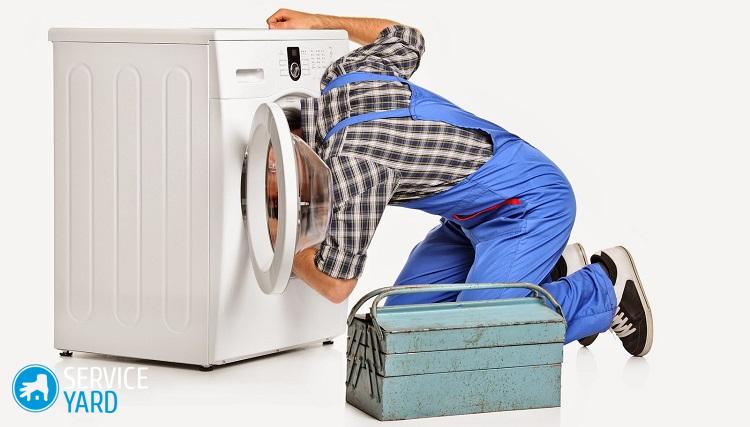
No tank rotation
The simplest thing is that the settings are lost and the device is paused. Correct the situation by choosing the right mode.
More options:
- The drive belt has flown or broken. If there is no damage to the parts - install it back, if there are cracks or it is torn - you will have to install new parts.
- The sunroof is not blocked. Due to this breakdown. the drum will also refuse to spin. Check the door and housing connections, as well as the door latch. If necessary, use our instructions to repair or replace the door lock.
Important! It is also possible that the motor has broken. How to check it is already described above.
Lack of discharge
In this case, the following reasons are possible:
- Incorrectly set mode switch - check if a pause in the wash cycle is possibly selected.
- Clogged or kinked drain hose. To eliminate the malfunction, the hose is washed and installed without kinks.
- Drain filter clogged. If the reason is in the filter, it must be removed and washed.
- Pump clogging is another reason the machine does not drain water.
- Breakdown of the exhaust pump. In this case, the pump is removed and the rotation of the impeller is checked. After - the pump is washed and the contact rings for cliffs. If necessary, the part is changed.
Important! Also, the causes of damage can be hidden in:
- contacts
- a timer;
- water level sensor.
Of course, all possible malfunctions can not be described, so hereinafter briefly a little more about the possible options.
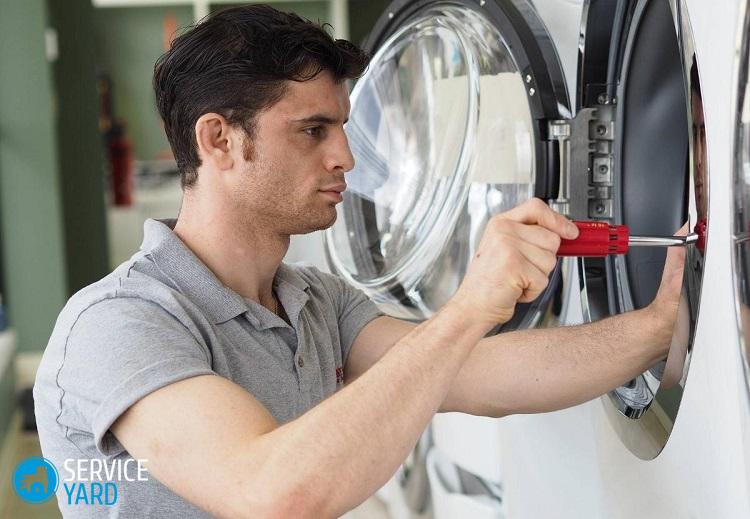
More issues:
- If water leaks from the device, there may be problems in the hose: it could jump out of the sewer, the connections could loosen, or it could crack, or the door does not fit snugly against the device. It is also possible that the sewer is clogged.
- In the presence of extraneous noise, most likely, objects (for example keys, coins, etc.) got into the tank. It is a very laborious task to disassemble the tank, so make sure that your pockets are empty. You should also check the lock of the hatch door - the lock could be damaged. Another option for such a breakdown is possible if there are problems with the device belt or the bearing “flew”.
- Strong vibration of the device most often indicates its overload or imbalance. Even the device can vibrate and even jump when installed on an uneven surface. Adjust the legs, check the level of how smoothly the appliance is installed. Heavier damage is a break in the suspension spring and a weakened counterweight.
- The door is locked - the door can be locked for 2 minutes after the end of the wash cycle. Also, this kind of malfunction is possible in case of breakage of the lock switch or if there is still water in the tank.
to contents ↑Important! If nevertheless you decide to choose a new washing machine, the specialists of our site of useful tips are ready to help you. We have prepared separate articles describing the best models of various types of equipment:
Stock footage
If your washing assistant has trouble, be sure to read the instructions first. It is possible that you can repair your washing machines with your own hands. If during the repair you have difficulties, the best solution is to contact a qualified specialist.




